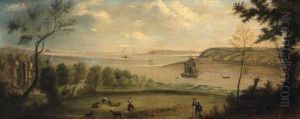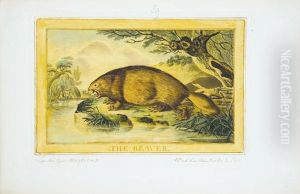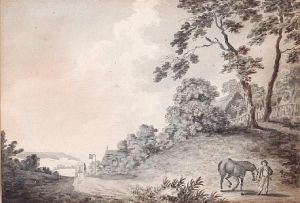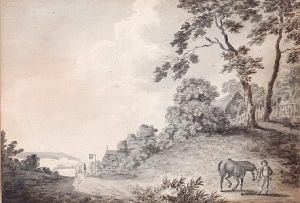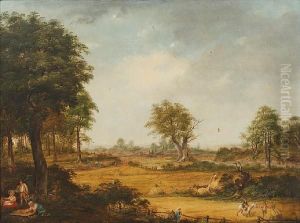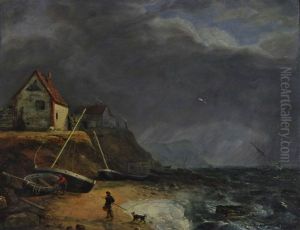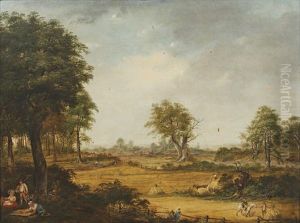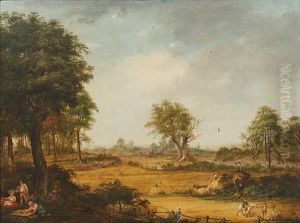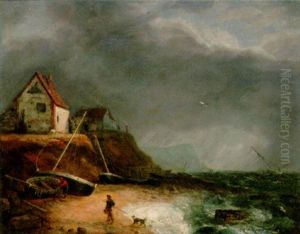Charles, Catton Jnr. Paintings
Charles Catton the younger was an English artist born in 1756, into a family deeply entrenched in the world of art. His father, Charles Catton the elder, was a renowned coach painter and a member of the Royal Academy, which naturally provided the younger Catton with an environment rich in artistic influence and opportunity from an early age. Despite the shadow cast by his father's accomplishments, Charles Catton the younger carved out his own niche, primarily focusing on landscape painting and animal studies, which were gaining popularity in late 18th-century England.
Catton's early life was marked by his exposure to the burgeoning art scene in London, where he absorbed the influences of contemporary landscape artists and the emerging Romantic movement. His style evolved to reflect a keen observation of nature, with a particular emphasis on the accuracy of animal anatomy, which became a hallmark of his work. This focus distinguished him from his father's more decorative and applied art, allowing him to establish a distinct artistic identity.
Throughout his career, Charles Catton the younger exhibited at the Royal Academy and other prominent venues, contributing to the vibrant art culture of the time. His travels, particularly to North America in the late 18th century, further enriched his palette, introducing exotic landscapes and wildlife into his repertoire. These experiences broadened the scope of British landscape painting, which had been predominantly focused on domestic scenes.
Despite his contributions to the art world, Charles Catton the younger did not achieve the same level of fame as some of his contemporaries. However, his work remains an important part of the study of British art history, offering insights into the transition from the precise naturalism of the 18th century to the more emotive and atmospheric landscape painting that characterized the early 19th century. Catton's legacy, though somewhat overshadowed by his father and the luminaries of his time, is preserved in collections and archives that recognize his role in the development of British landscape and animal painting.
Charles Catton the younger died in 1819, leaving behind a body of work that reflects both his reverence for the natural world and his contribution to the evolving landscape of British art during a period of significant change and innovation.
